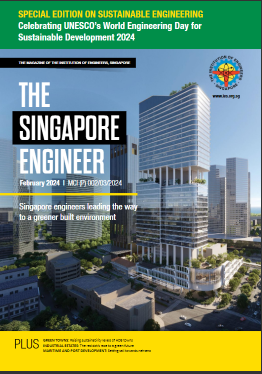CFD for the Built Environment – a critical & necessary step in Singapore’s Net Zero Journey
- Author : SCx Solutions
- Date : March 12, 2024
The Built Environment is at the
junction of energy needs, policy
and a changing climate. CFD can
provide an accurate, meaningful
insight into the dynamic relationship between the three.
Extensive urbanisation since the
mid-1970s has led to Singapore rapidly heating up. According to the
Meteorological Service Singapore,
the island is warming up twice as fast
as the rest of the world, at 0.25 °C
per decade.

Last year (2023) was the fourth
warmest year on record for Singapore, tied with 1997 and 2015. At
the Changi climate station, the last
nine months of the year saw above
average temperatures, with record-breaking temperatures in May
and October
Singapore’s equatorial climate necessitates air-conditioning in almost
99% of condominiums
A standard 2 kW AC unit, switched
on for 8 hours a day for 20 days
a month, to cool a 20 m2 room,
produces 1.4 tonnes of carbon emissions annually. Four such AC units,
in a home, will generate about 5.6
tonnes of carbon emissions annually.
Singapore faces the dual problem
of increasing energy consumption
and increasing carbon emissions.
It also impacts the island nation’s
energy security.
Application of Computational Fluid
Dynamics
Computational Fluid Dynamics
(CFD) is a powerful tool available
to today’s designers in the AEC sector, to help them make the right
energy-efficient choices, ahead of
time, throughout the lifetime of
the asset.
Complex systems involving fluid flow phenomena are commonly
found along the energy value chain.
CFD is a tool that can be used to
predict fluid flow phenomena using
numerical algorithms.
Various combinations of HVAC
systems, microclimatic conditions
(wind direction, wind load etc),
shading, occupancy levels etc, can
be simulated, providing AEC professionals with usable results.
Today’s commercial CFD solutions, can model thermal comfort
and internal air quality for different
occupancy levels while considering
planned HVAC capacity and different ventilation schemes.
CFD is a powerful tool available to
today’s designers in the AEC sector,
helping them to make the right energy-efficient choices ahead of time.
This will help Singapore achieve
the goals of reduced emissions to
60 million tonnes of carbon dioxide
equivalent by 2030, Net Zero emissions by 2050 and Improved Energy
Security
Recent News

Free Webinar on CFD for Data Centers and Thermal Design with ColdStream Nxt
SCx Solutions
May 29, 2024

CFD for the Built Environment – a critical & necessary step in Singapore’s Net Zero Journey
SCx Solutions
March 12, 2024

Free Webinar on CFD for Pumps
SCx Solutions
March 12, 2024
